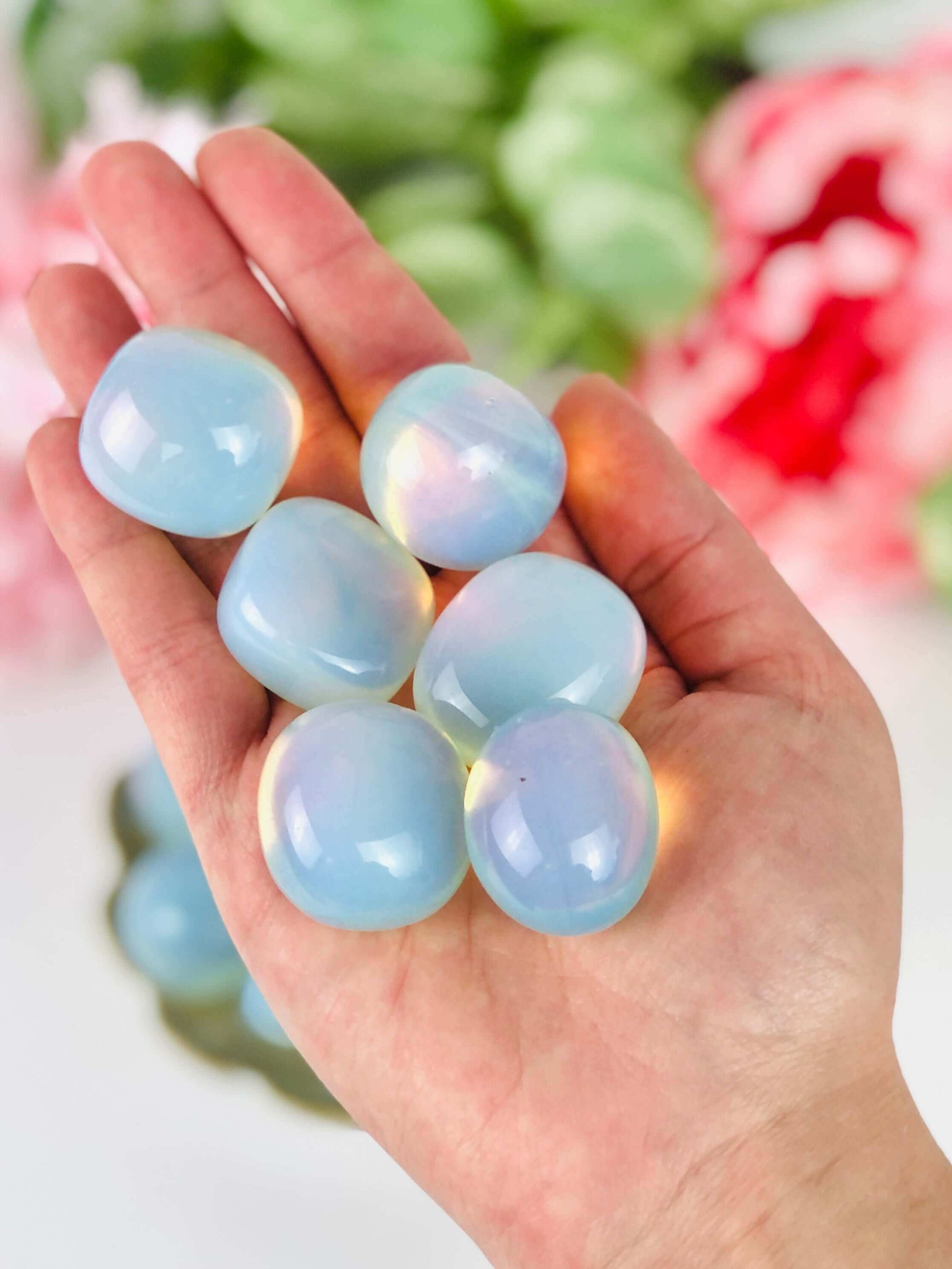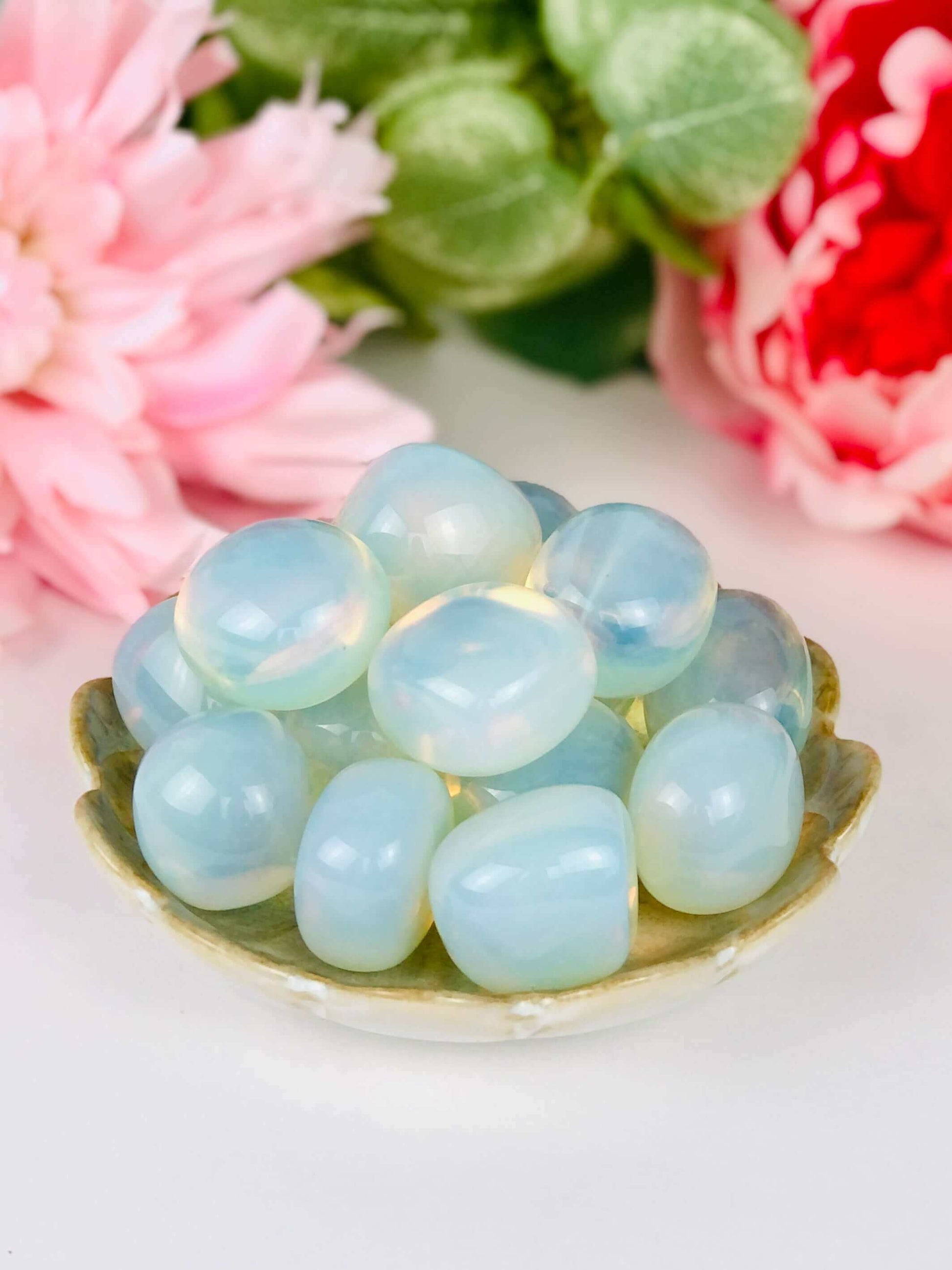


Opal Meaning , Properties, and Uses
Beauty - Love - Wealth
Chakras: Heart
Zodiac: Cancer, Leo, Pisces
Affirmation: I walk in beauty

Introduction to Opal
Opal is a mesmerizing gemstone that has captivated humanity for centuries with its kaleidoscope of colors and unique properties. As one of the most sought-after gemstones, Opal's beauty lies in its play of vibrant hues, ranging from fiery reds and oranges to soothing blues and greens. This gemstone is truly a natural work of art, formed through a combination of geological processes and the presence of water in the Earth's crust.
Opal derives its name from the Latin word "opalus," which means "precious stone." It is composed of tiny silica spheres arranged in a three-dimensional pattern, diffracting light and producing a dazzling array of colors. Opals are found in various parts of the world, including Australia, Ethiopia, Mexico, and Brazil, each region boasting its own unique characteristics and color variations.
One of the most intriguing aspects of Opal is its play of color, also known as opalescence. This phenomenon occurs due to the interaction between light and the silica spheres present in the gemstone. As light passes through the opal, it is diffracted and refracted, creating a stunning display of iridescence. This optical effect makes Opal a truly enchanting gem, as its colors can shift and change depending on the angle of observation.
Opals have been cherished throughout history for their mystical qualities and captivating beauty. Ancient civilizations believed that Opal possessed magical powers, including the ability to bring good luck and protect against evil. In medieval times, Opal was regarded as a symbol of hope and purity. Today, Opal continues to be highly regarded as a gemstone of great significance and allure.
In addition to its aesthetic appeal, Opal is also known for its healing properties and spiritual significance. It is believed to enhance creativity, inspire originality, and promote emotional well-being. Opal is also associated with love, passion, and loyalty, making it a popular choice for engagement rings and other sentimental jewelry.
In this blog, we will delve deeper into the fascinating world of Opal, exploring its types, characteristics, and the various factors that determine its value. Whether you're an Opal enthusiast, a jewelry connoisseur, or simply curious about this captivating gemstone, join us on this journey to discover the magic and allure of Opal.
Opal Meaning and Significance
Opal, with its vibrant play of colors, holds deep meaning and significance across cultures and throughout history. The name "Opal" originates from the Latin word "opalus," which means "precious stone." This gemstone is believed to possess mystical properties, including the ability to bring good luck and protect against evil. Opal is also associated with hope, purity, and inspiration. It is considered a symbol of love, passion, and loyalty. Beyond its aesthetic appeal, Opal is believed to enhance creativity and emotional well-being. Whether worn as jewelry or admired for its beauty, Opal continues to captivate and enchant people worldwide with its mesmerizing allure.
Opal Properties and Characteristics
Opal is a gemstone renowned for its distinctive properties and captivating characteristics. One of its defining features is its play of color, which arises from the diffraction and reflection of light through its internal structure. Opals can exhibit a mesmerizing array of hues, ranging from fiery reds and oranges to tranquil blues and greens, often combined in a vibrant dance of colors. Another remarkable aspect of Opal is its relatively low hardness, making it more delicate compared to other gemstones. This unique property requires proper care to prevent scratches or damage. Opal's origin and location also contribute to its distinctiveness, with each region showcasing its own unique patterns, color variations, and transparency levels. The interplay of these properties and characteristics adds to the allure and individuality of Opal, making it a beloved gemstone among collectors and jewelry enthusiasts alike.
Types of Opal
Opal comes in a variety of types, each with its own unique characteristics and allure. The most well-known type is Precious Opal, which displays a captivating play of color. It can be further categorized based on its body tone, ranging from black opal with a dark background to white opal with a light background. Fire Opal is another popular type, recognized for its vivid orange, red, and yellow hues. Common Opal, also known as Potch Opal, lacks the play of color but is valued for its unique patterns and transparency. Other notable types include Boulder Opal, which forms within ironstone, and Crystal Opal, known for its transparent and water-clear appearance. Each type of Opal possesses its own mesmerizing qualities, making them alluring gemstones in their own right.
Opal Birthstone: History and Symbolism
Healing Properties of Opal
Uses of Opal in Jewelry and Decor
How to Care for Your Opal
Opal, with its delicate nature, requires special care to maintain its beauty and longevity. Here are some essential tips to help you care for your Opal. First and foremost, avoid exposing your Opal to extreme temperatures, as sudden changes can cause cracks or fractures. It is also important to protect your Opal from harsh chemicals and household cleaners that can damage its surface. When not in use, store your Opal jewelry in a soft pouch or cloth to prevent scratches and keep it away from other harder gemstones. Regularly clean your Opal using a mild soap and lukewarm water, gently wiping it with a soft cloth. Lastly, avoid subjecting your Opal to excessive sunlight or prolonged exposure to water, as this can cause it to fade or lose its play of color. By following these care guidelines, you can ensure that your Opal remains a radiant and cherished gemstone for years to come.


